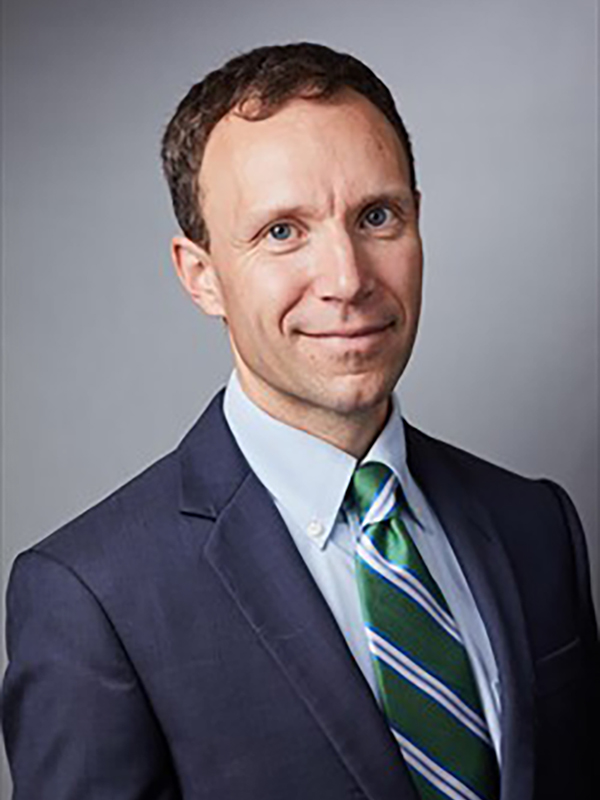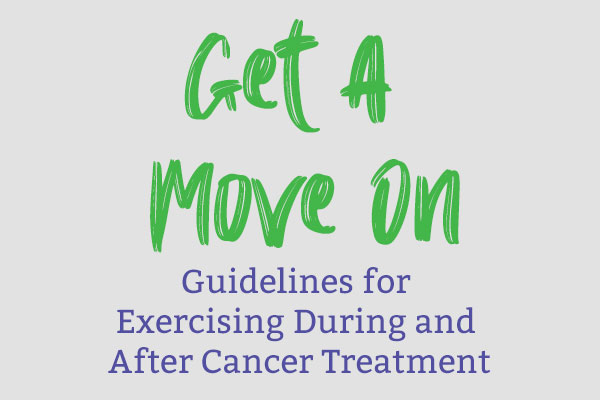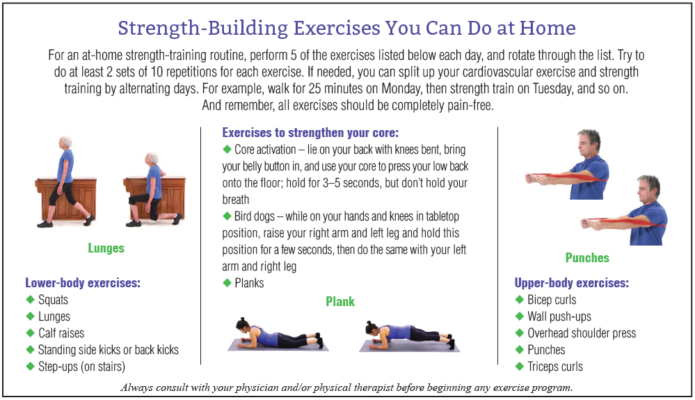Get A Move On
Guidelines for Exercising During and After Cancer Treatment
by Scott Capozza, PT, MSPT, and Christie Wukovits, PT, DPT
Exercise should be a part of everyone’s daily activities. This is especially true for cancer survivors.
Research shows that regular exercise can help reduce cancer-related fatigue, improve cancer survivors’ physical function and health-related quality of life, lessen symptoms of anxiety and depression, and help you manage lymphedema. The biggest challenge is knowing where to start and how to exercise safely. The following guidelines can help you get a move on and get back your physical function.
Getting Started
Both aerobic and weightbearing exercise are recommended for cancer survivors. Start slow, and be realistic with your goals. For example, start with walking for 10 to 15 minutes three times a week. Then add 5 minutes each week until you hit 30 minutes three times a week. Once you can comfortably walk for 30 minutes three times a week, add another day, and then another, until you’re walking for 30 minutes five times a week.
When it comes to strength training, start with low weight and low repetitions. Then, increase the number of repetitions first before adding more weight. Do not abide by the “no pain, no gain” adage. Your body is healing. Be careful not to push it too far.
Making Exercise a Part of Your Daily Routine
Starting or resuming an exercise routine during or after cancer treatment may seem daunting at first. However, once you get past your initial apprehension, you’ll find that making exercise part of your daily routine is easier than you thought. For starters, most exercise programs can be done at home; there’s no need to join a gym or sign up for a fitness program. In addition, any physical activity you enjoy – tennis, golf, dancing, hiking – counts as exercise.
Do not abide by the “no pain, no gain” adage. Your body is healing. Be careful not to push it too far.
Here are some tips to help you get moving every day (or at least most days of the week):
- Schedule exercise in your calendar, as if it was a work meeting.
- Exercise with a friend, while practicing COVID safety precautions. Having a workout buddy can make exercise more fun. Plus, you’ll have someone to help hold you accountable for sticking with your exercise routine.
- Set achievable, short-term goals for yourself. If you have a long-term goal, like being able to play 18 holes of golf, then break it into smaller, more manageable goals. For example, start with hitting golf balls at the driving range for 30 minutes, and then work your way up from there.
- Plan ahead. Bring your workout clothes to work, or keep your sneakers in the car, so you can stop by a greenway for a walk on your way home. It’s much easier to exercise if you are already dressed and ready to go.
- Make exercise a family affair. Ride bikes with your kids, go for a hike with your significant other, or take a family walk around the neighborhood after lunch.
- Join an online exercise class. From yoga, to barre, to high-intensity interval training, there’s something for everyone. Just do your research, and make sure that the instructors are qualified to teach exercise classes to cancer survivors.
Do It for Your Health
Exercise is self-care. It is also safe for most cancer survivors. Just be sure to talk with your doctor before beginning an exercise program or trying anything new. And always listen to your body. Your body will tell you what it physically can do. These guidelines can help you get started with an exercise program. The next step is up to you.
If you have any questions about exercise during and after cancer treatment, or you need help implementing an exercise program, reach out to an oncologic physical therapist through the American Physical Therapy Association website, apta.org, or a certified cancer exercise trainer through the American College of Sports Medicine website, acsm.org. These specialized physical therapists and personal trainers can help you address any barriers to exercise you may have.


Scott Capozza is a board-certified clinical specialist in Oncologic Physical Therapy at Yale New Haven Hospital in New Haven, CT. He also works with a multidisciplinary team in Smilow Cancer Hospital’s Adult Survivorship Clinic in New Haven.
Christie Wukovits is a recent graduate who has completed research in oncology rehabilitation, as well as clinical work in Yale New Haven’s Smilow Cancer Hospital.
This article was published in Coping® with Cancer magazine, May/June 2021.



